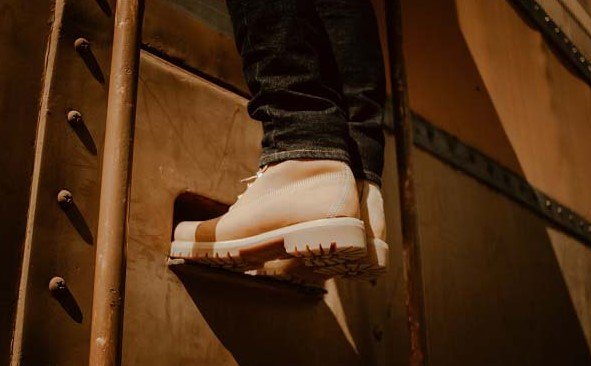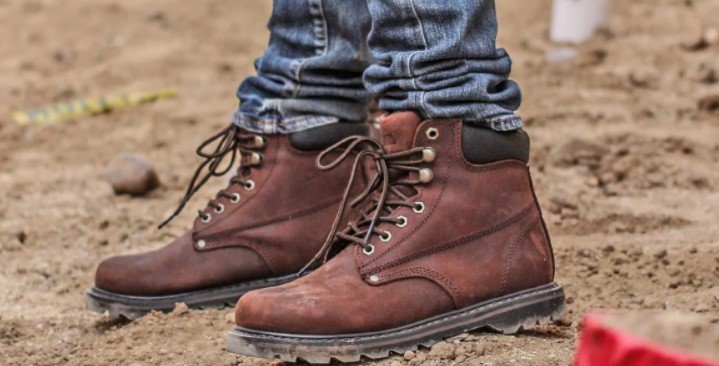The OSHA Law of the United States Department of Labor enforces employees on using protective footwear in worksites. But those work boots have impacts on the lower limb, including the knees. How? The largest muscle of the leg, Gastrocnemius (Calf Muscle), is connected with the heel. Thus, it can extend and flex the knee, ankle, and foot.
So, from the impacts, can work boots cause knee pain? Knowing the answer to this question is only the starter. Therefore, the secondary essentials are to learn the tips to avoid knee pain and key features in the work boots. Let’s get right to it.
Can Work Boots Cause Knee Pain
Yes, they can, if the impact factors are being neglected. Work boots are always there to protect your feet. But things affecting the feet to lower limb in different ways include prolonged use, poor quality, posture, and so on.
As for many reasons, one could be that many work situations include kneeling. It can be a sudden kneeling or hours of kneeling position.
A study conducted by author Lienna Tennant with her co-authors and affiliation of Faculty of Applied Health Sciences, Department of Kinesiology, University of Waterloo, Canada, shows that this type of occupational kneeling with work boots has a high risk for potential knee osteoarthritis and severe knee injury.
It happens because CoP (Center of Pressure) shifts medially with significance, using tibial tuberosity in shod conditions. Then the pressure is imposed on multiple surfaces of the knee. Thus, kneeling posture and knee joint alters while wearing work boots.
Also, knee issues get bigger if the boots are not meant to be supportive work boots for bad knees. Though many work boots feature high heels to prevent electrical hazard, they lack the feature of standard outsoles. As a result, your heels become misaligned. Then to keep the balance, they pressure the knees.
Next comes the lack of perfectly cushioned footbeds and quality midsoles with proper shock absorption. As work boots demand rough surfaces and prolonged usage, they should provide your feet with a secured comfort zone.
For that, there must be a structural harmony of ligaments, tendons, bones, and muscles of your feet for safe positioning and better shock absorption.
Besides, using heavy boots means the lack of prime ergonomic features. Thus, it creates the feet swing and results in straining the knees.
Last but not least is getting an ill-fitted pair. Be it regular shoes or boots; the ill-fitting one always ends up resulting in foot pain. The situation is way worse for wrong work boots as it also affects the knees.
As the ill-fitting causes instability, the feet are overworking and at potential risk of twists and sprains. Overworking of the feet exacerbates the overpressure on the knees and ends up in chronic pain.
Features In The Work Boots To Avoid Your Knees From Hurting
Key factors like weight, fitting, footbed, heel height, arch support, and midsole of your work boots can have impacts on your knees. Utilizing these features reduces the potential risks of hurting the knees.
Weight
As mentioned earlier, knees get affected by the inertia created by feet swing. It occurs for using heavy boots as they do not feature prime ergonomic comforts. Besides, wearing these for hours causes discomfort in the physical activity and fatigue in the entire lower limb.
Hence, lightweight work boots are significantly essential to ensure comfort for good knee and foot health.
Fitting
Fitting is one of the most common and yet major issues people often overlook. Ill-fitting and improper shoes cause instability. Thus, to maintain balance, the feet have to overwork by staking the knees.
In comparison, perfectly fitted work boots ensure stability that helps the feet sustain distributive pressure without stressing the knees.
Footbed
Rough surfaces in the workplace include high-impact movements. And these movements amplify stress on different parts of the lower limb, including the knees.
So, to deal with rough surfaces, you need an adequately cushioned footbed in the work boots. It maintains the compression mechanism of the feet. Thus you get better shock absorption to reduce the impacts.
Heel Height
Taller boots will not be sufficient if they have thin heels. Thus, they create a misalignment in the entire body. Then the knees get stressed while sustaining the alignment for balance.
Therefore, the heel height should be proportionate ideally to the thickness of the heel.
Arch Support
The arches in the feet are there to secure balance. They also help in the even distribution of the weight to maintain the center of gravity.
Many work boots lack sufficient arch support. Though there are particular arch types like cavus feet (high arches) and pes planus (flat feet), not all work boots feature special arch supports for them.
Without proper arch support, the arches collapse, and the feet flex. Thus, the tendons and ligaments of your lower limb, including the knees, try to compensate for this misalignment.
It then causes knee strains. Besides, it can cause severe damage and bad knees over time.
Midsole
Work boots have a rigid style targeting heavy protection in their construction. While doing that, some models lack a standard midsole.
Like a footbed, work boots should have a sturdy midsole that provides better shock absorption. It affects the gait cycle using the natural motion of the feet.
Outsole
Lack of good outsole results in involuntary flex and slipping. Thus, your knees have to struggle to pay off the balance.
The good outsole offers an appropriate traction surface to sustain the balance. It also prevents your feet from pronating.
Tips To Avoid Knee Pain While Wearing Work Boots
Learning causes of knee pain and work boots features for bad knees are the effective measures to get started. But while wearing work boots, a few useful tips can help in preventing knee pain.
- Choosing the right pair of work boots is the precondition for preventing knee pain. In that case, the features mentioned above in work boots are good to go.
- Working on rough surfaces with work boots is vulnerable to the lower limb, including the knees. Even though work boots save the feet from immediate damage, it would be better not to stake the balance.
- Cozy socks with quality materials ensure comfort in work boots. Though insulation can cause sweating sometimes, antimicrobial socks can be effective in moist weather.
- Kneeling posture with work boots has an immense effect on the knees. If kneeling cannot be avoided, it is an effective way to keep the back straight while bending.
- For preventing knee strains, a better process is not to lift heavy objects. But in inevitable cases, we can use both the back and knees for the lifting.
- High impact activity wearing work boots also causes knee pains. Therefore, keeping it in mind, we can take proper cautions to moderate those activities.
- Standing for long hours leads to slouching. For that, it is essential to maintain a good standing posture. A simple way to do that is by centering the head over the shoulders and then centering the shoulders over the pelvis and abdomen.
Work boots impacting feet, feet impacting knees – that is like a chain reaction. Thus, using a few tips and features is useful to avoid knee pain down the road.
However, numerous studies on work boots and user demands encourage manufacturers to include abundant features.
But the features focused above in work boots have greater significance for particular issues like bad knees.
Even though work boots can cause knee pain, adopting the right pair and being a little bit more careful while wearing them lessen the potential risks.



